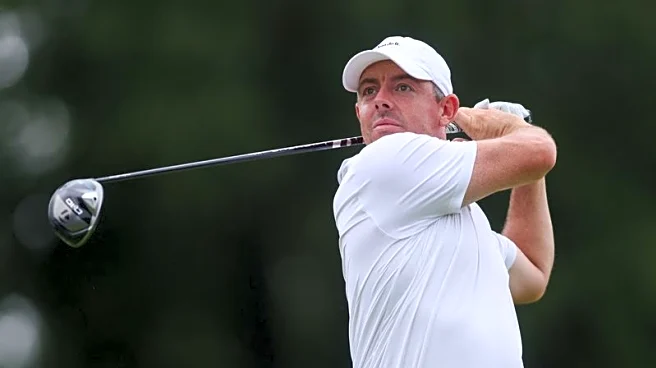What is the story about?
What's Happening?
Rory McIlroy, a prominent figure in the Irish Open, has voiced his frustration regarding a slow play warning he received during the tournament. McIlroy, who started on the 10th hole, faced challenges due to the large crowds and camera crews following his group. He believes these factors should be considered by officials when assessing the pace of play. McIlroy's group, which included players Lawrence and Reitan, struggled with pace, partly due to their difficulties on the course, including hitting balls into the water on the seventh hole. McIlroy expressed that the additional attention his group receives often leads to delays, and he feels that officials should apply common sense and allow some leeway in such situations.
Why It's Important?
The issue of slow play in golf tournaments is significant as it affects the overall pace and experience of the event for players and spectators alike. McIlroy's comments highlight the challenges faced by high-profile players who attract larger crowds and media attention, potentially impacting their performance. This situation underscores the need for tournament officials to balance the enforcement of pace rules with the realities faced by popular players. The broader impact includes potential changes in how pace of play is managed in future tournaments, which could benefit players and improve the viewing experience for fans.
What's Next?
As McIlroy continues to participate in the Irish Open, it remains to be seen how officials will respond to his concerns. There may be discussions on adjusting pace of play rules to accommodate the unique circumstances faced by high-profile groups. Additionally, McIlroy plans to use upcoming weeks to refine his game ahead of the Ryder Cup, indicating his focus on improving performance despite the challenges faced at the Irish Open.
Beyond the Headlines
The situation raises questions about the fairness and consistency of pace of play enforcement in golf tournaments. It also highlights the pressure faced by top players who must navigate both competitive play and the demands of media and fan engagement. This could lead to broader discussions within the golf community about how to best support players while maintaining the integrity of the sport.
AI Generated Content
Do you find this article useful?















